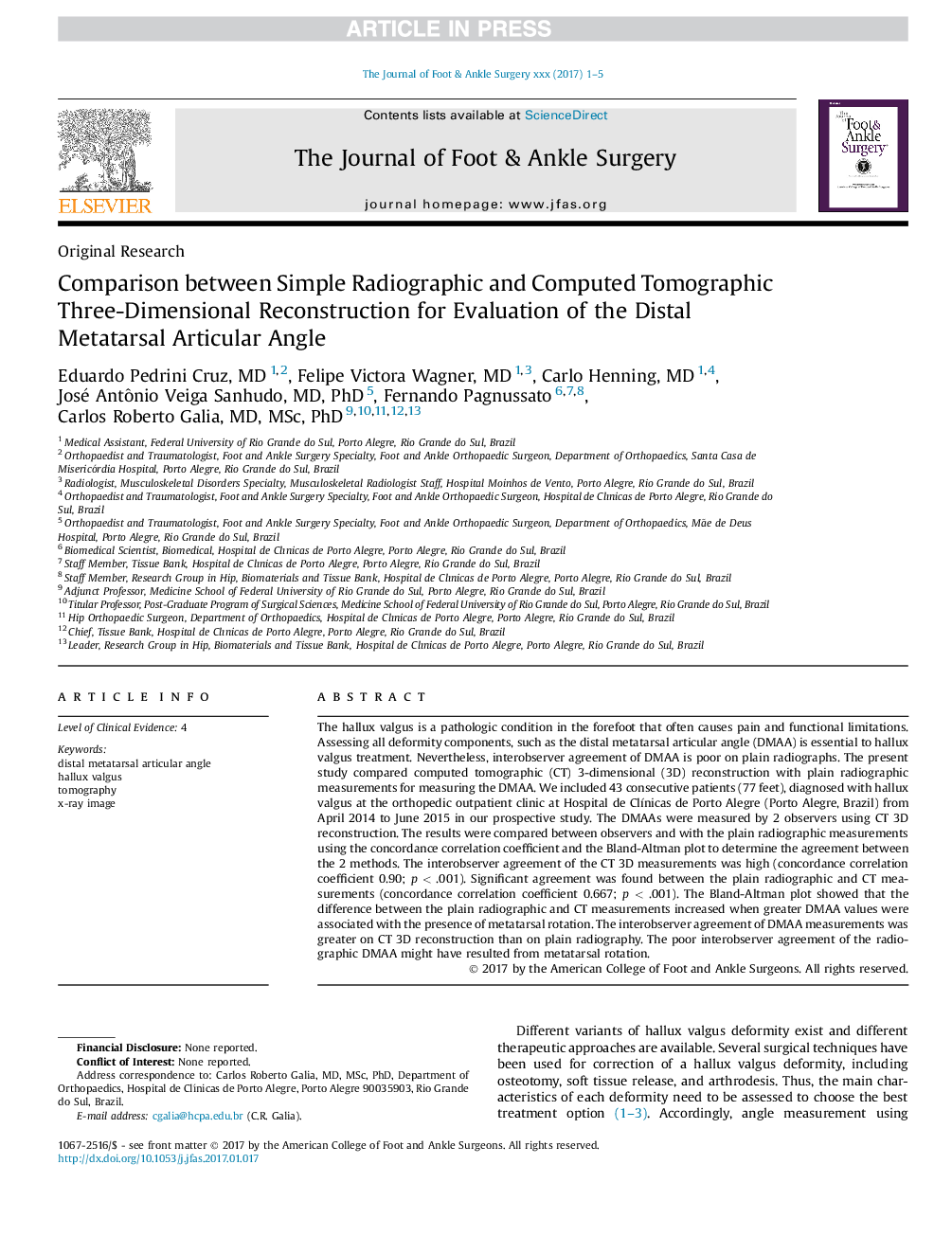| Article ID | Journal | Published Year | Pages | File Type |
|---|---|---|---|---|
| 5576027 | The Journal of Foot and Ankle Surgery | 2017 | 5 Pages |
Abstract
The hallux valgus is a pathologic condition in the forefoot that often causes pain and functional limitations. Assessing all deformity components, such as the distal metatarsal articular angle (DMAA) is essential to hallux valgus treatment. Nevertheless, interobserver agreement of DMAA is poor on plain radiographs. The present study compared computed tomographic (CT) 3-dimensional (3D) reconstruction with plain radiographic measurements for measuring the DMAA. We included 43 consecutive patients (77 feet), diagnosed with hallux valgus at the orthopedic outpatient clinic at Hospital de ClÃnicas de Porto Alegre (Porto Alegre, Brazil) from April 2014 to June 2015 in our prospective study. The DMAAs were measured by 2 observers using CT 3D reconstruction. The results were compared between observers and with the plain radiographic measurements using the concordance correlation coefficient and the Bland-Altman plot to determine the agreement between the 2 methods. The interobserver agreement of the CT 3D measurements was high (concordance correlation coefficient 0.90; p < .001). Significant agreement was found between the plain radiographic and CT measurements (concordance correlation coefficient 0.667; p < .001). The Bland-Altman plot showed that the difference between the plain radiographic and CT measurements increased when greater DMAA values were associated with the presence of metatarsal rotation. The interobserver agreement of DMAA measurements was greater on CT 3D reconstruction than on plain radiography. The poor interobserver agreement of the radiographic DMAA might have resulted from metatarsal rotation.
Keywords
Related Topics
Health Sciences
Medicine and Dentistry
Orthopedics, Sports Medicine and Rehabilitation
Authors
Eduardo Pedrini MD, Felipe Victora MD, Carlo MD, José Antônio Veiga MD, PhD, Fernando MSc, Carlos Roberto MD, MSc, PhD,
